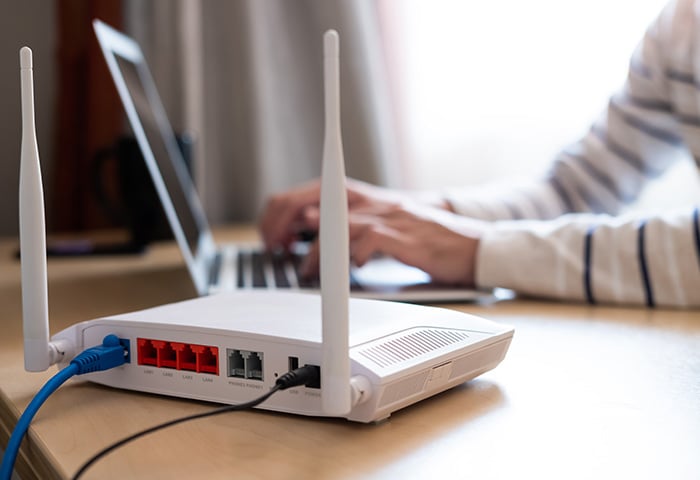What was the Silk Road website?
The Silk Road website was an anonymous internet marketplace active from January 2011 to October 2013. Accessible through encrypted dark web browsers such as Tor, Silk Road was known as a hotbed of illegal activity facilitated by cryptocurrency, and served as one of the initial use cases for Bitcoin.
Silk Road proved the market for secure anonymous transactions based on blockchain ledgers, and the viability of cryptocurrency in general. Before the Silk Road marketplace, Bitcoin was mainly a novelty, with the first Bitcoin transaction famously being 10,000 BTC for 2 pizzas. Shortly after the Silk Road darknet market took off, Bitcoin reached $266 per coin, and the Silk Road marketplace became a $200 million operation.
The Silk Road black market was a philosophical venture as well as a financial one. The Silk Road definition was a reference to the ancient trans-Eurasian trade route, which brought many different cultures and ideas together in a relatively peaceful manner. The Silk Road website’s founder, Ross Ulbricht (AKA “Dread Pirate Roberts”) sought to emulate this ethos — but failed.
The founder of Silk Road, Ross Ulbricht
Ross William Ulbricht was the creator and owner of the Silk Road website who was deeply interested in libertarian economic and political theory while studying engineering at Penn State University. He was also inspired by his favorite book, Alongside Night — about a society built upon an open marketplace — to create what would become the Silk Road anonymous market.
By leveraging the anonymous Tor web browser and untraceable cryptocurrency, he soon realized his vision for a decentralized marketplace.
Silk Road started when Ulbricht, using the pseudonym “altoid,” posted a link to the Silk Road website on a magic mushroom forum on January 27, 2011. Ulbricht’s post was simple and to the point: “I came across this website called Silk Road…”
 A screenshot of Ross Ulbricht’s first post about the new Silk Road website.
A screenshot of Ross Ulbricht’s first post about the new Silk Road website.
To gain more attention, he also posted anonymously on Bitcoin forums and wrote about how Silk Road works, how to use Tor, and how to exchange cash into Bitcoins. During his trial, Ulbricht’s defense also pointed to evidence that he advocated for “safer” drug use on Silk Road.
But the Silk Road didn’t last long. On October 1, 2013, it was shut down by the FBI, and Ulbricht was arrested and ultimately convicted and imprisoned.
What was sold on Silk Road?
The Silk Road website sold mainly drugs (illegal narcotics, prescription medication), illicit goods (forged documents, pirated media), and some legitimate goods (books, apparel, services). Silk Road had over 200 product categories, but by 2013 drugs made up 70% of the approximately 10,000 products sold on Silk Road.
Silk Road had a policy against items “the purpose of which is to harm or defraud another person,” but the policy was difficult to enforce. Products such as malware, hacked accounts, or hacking services soon became available. Although guns and other weapons were traded, contract killing services were, allegedly, never officially available on Silk Road.
Some examples of what was sold on the Silk Road website:
-
Illegal drugs
-
Controlled prescription drugs
-
Books
-
Digital goods such as malware, hacked online accounts, and pirated media
-
Erotica and pornography
-
Forged driver’s licenses and passports
-
Services such as computer hacking or cyberstalking
-
Performance enhancing drugs
-
Weapons
Silk Road did at least pay lip service toward limiting the sale of goods that facilitate cybercrime. Today, on Silk Road imitation sites, dark web users can buy and sell private data, cracked passwords, exposed financial details, and more. To help keep yourself protected against these and other online threats, read up on ATM and credit card fraud and the password cracking techniques hackers use.
How did the Silk Road website work?
The Silk Road website worked through Tor, which masks user identities by routing encrypted requests through a series of nodes. As with other dark web sites, when a user entered the Silk Road website address, the first server received the request, then forwarded the request to a second server, and then to a third server, and so on, until the traffic finally reached Silk Road.
Dark web browsers like Tor use .onion addresses, since they route requests through multiple server strata, like the layers of an onion. The Silk Road dark web link was tydgcecykixpbu6uz.onion.
Silk Road transactions were made with Bitcoin, so it was necessary to exchange cash into Silk Road Bitcoin before purchasing anything — like exchanging cash for tokens at an arcade. All the tokens looked the same, so no one knew where they originated. But a public ledger for transactions (called a blockchain) was kept, so vendors knew the Bitcoin had been transferred.
At the time, Bitcoin was the only Silk Road crypto player in town. Now, with many cryptocurrencies available, there’s talk about the best cryptocurrency exchanges. So if you’re thinking about getting into crypto, and can stomach the volatility, read up on whether Bitcoin is safe or if Coinbase is a safe crypto exchange.
What happened to Silk Road?
Silk Road was seized and shut down by the US government in October 2013, and founder-owner Ross Ulbricht was simultaneously arrested. Shortly afterward, a new Silk Road-style website called Silk Road 2.0 surfaced, but this was also shut down within a year by Operation Onymous, an international darknet police force.
After its initial launch in early 2011, Silk Road quickly gained attention. On June 1, 2011, a Gawker report introduced the Silk Road marketplace to the public. That attracted the attention of politicians like US Senator Chuck Schumer, and federal agents were put on the case.
The FBI were soon following the user named “altoid” who kept recommending Silk Road. On October 11, 2011, in an accidental security breach, Ulbricht shared his gmail account while posting as “altoid” on a forum, which helped authorities identify him and led to his eventual arrest.
 The forum post that ultimately led to Ross Ulbricht’s arrest.
The forum post that ultimately led to Ross Ulbricht’s arrest.
Ulbricht made other self-incriminating mistakes, such as alluding to Silk Road on his LinkedIn profile, using his real photograph for Silk Road server rental, and even allegedly hiring an undercover agent to carry out an assassination. Ulbricht was eventually tracked to an internet cafe in San Francisco, where he logged in as Dread Pirate Roberts.
But Ulbricht wasn’t the only person behind Silk Road. Richard Bates was Ulbricht’s head programmer, and Roger Thomas Clark, aka “Mongoose” or “Variety Jones,” acted as Ulbricht’s mentor. Both were apprehended. To escape prosecution, Bates testified against Ulbricht in 2015, while Clark was sentenced to 20 years in prison in 2023.
Ross Ulbricht was convicted in 2015 for all seven charges brought against him in court. He has exhausted all appeals and is currently sentenced to life in prison without the possibility of parole.

The official FBI notice that the Silk Road marketplace had been officially shut down.
Does Silk Road still exist?
Silk Road does not currently exist. Its immediate successor, Silk Road 2.0, which was operated by administrators of the original site, ceased to exist on November 6, 2014, after being shut down by an international police task force. Silk Road is not active today and hasn’t been used since Silk Road 2.0 shut down.
Does Silk Road still exist in other forms? Kind of. Several darknet marketplaces currently exist that follow the Silk Road model, allowing anonymous cryptocurrency transactions on websites only accessible through dark web browsers.
What happened to the seized Bitcoins?
When Silk Road was shut down, 144,000 Silk Road Bitcoins were seized. In 2015, $13.5 million worth of the Silk Road Bitcoins were auctioned off. In November 2021, 50,000 additional Bitcoins stolen from Silk Road in 2012 were seized and subsequently sold by the US government for $215.5 million in 2023.
What replaced Silk Road?
Dark marketplaces Agora, AlphaBay, Dream Market, and Hydra replaced Silk Road and Silk Road 2.0, although all are now defunct. Some current darknet marketplaces include ASAP market, Archetyp, and Incognito, but many former dark web marketplaces have gone mobile on encrypted secure messaging apps like Telegram.
There is no true new Silk Road website, as law enforcement agencies have learned to systematically infiltrate and monitor the dark web and shut down centers of illegal commerce. The following replacements for Silk Road have all gone the same way as the original dark web marketplace:
Silk Road 2.0
Silk Road 2.0 was only active for a year before being shut down by the FBI and Europol. Its founder, Blake Benthall, AKA “Defcon,” tried to resurrect Silk Road by copying it almost exactly. Silk Road 2.0 had over 13,000 listings for controlled substances, along with many of the original Silk Road categories.
Silk Road 3 Reloaded
After Silk Road 2.0 shut down, a “new” Silk Road website was advertised as Silk Road 3.0, or “Silk Road 3 Reloaded.” But it was simply a rebranding of a pre-existing dark web marketplace called Diabolus Market trying to take advantage of the Silk Road’s notoriety.
Agora
Agora ran from 2013 to 2015, and it avoided the crackdown that saw the demise of Silk Road 2.0 and other dark web marketplaces. Before closing in 2015, Agora was briefly the world’s largest darknet market.
Dream Market
Dream Market was founded in late 2013, and officially shut down on April 30, 2019. A prolific Dream Market vendor was arrested in August 2017 with $500,000 in cryptocurrency on his laptop. The dark web marketplace allegedly amassed up to $168 million in annual revenue.
Hydra
Russian darknet site Hydra became the world’s largest and longest-running darknet marketplace. Hydra amassed 17 million users and $5 billion in revenue over 8 years before being shut down by German authorities in 2022. Hydra was also notorious for facilitating the only documented case of a dark web contract killing.
AlphaBay
AlphaBay ran from 2014 to 2017, with over 400,000 users and 300,00 items listed when it was shut down in 2017. AlphaBay was one of the first darknet markets to accept cryptocurrency other than Bitcoin, such as Monero and Ethereum. AlphaBay was shut down along with Hansa in Operation Bayonet. It returned briefly in 2021, but soon went dark again.
Other dark web marketplaces
Archetyp, ASAP Market, and Bohemia are the closest marketplaces to the Silk Road that exist today. But even these may be gone by the time you read this, as many darknet marketplaces pop up and disappear quickly — along with the cryptocurrency and data belonging to their customers — in what is known as an “exit scam.”
Other, more limited, markets exist on the dark web to trade sensitive data that cybercriminals can use to commit fraud. That’s why it’s a good idea to regularly scan the dark web for any compromised information that could be used to steal your identity.
Protect yourself against online threats
A VPN hides your true location and online activity, and it encrypts the data you send and receive online whether you're on the surface web or exploring the dark web.
AVG Secure VPN protects your online connection with bank-grade encryption and hides your identity behind a virtual IP address. Plus, it features a built-in kill switch to help you from being unmasked if your connection drops. Get powerful internet privacy and security today.

 A screenshot of Ross Ulbricht’s first post about the new Silk Road website.
A screenshot of Ross Ulbricht’s first post about the new Silk Road website. The forum post that ultimately led to Ross Ulbricht’s arrest.
The forum post that ultimately led to Ross Ulbricht’s arrest.














